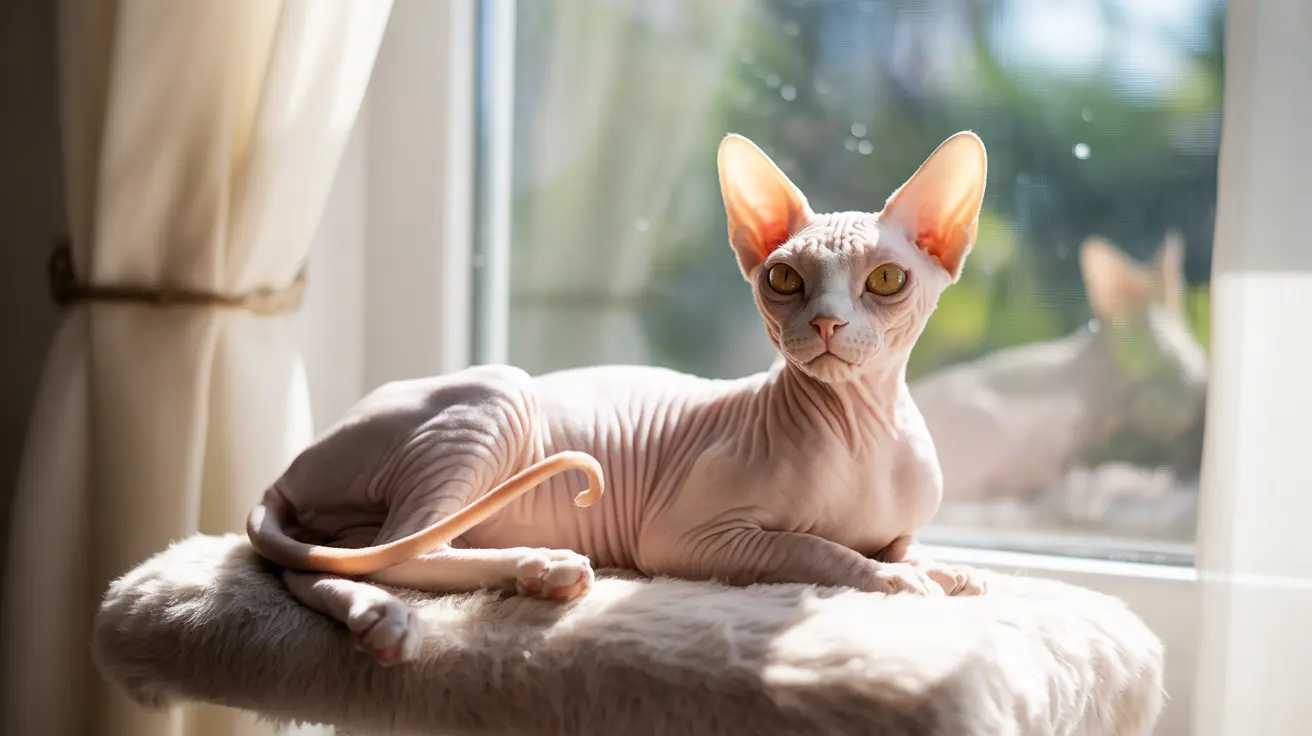Understanding Your Cat's Ideal Temperature Range
Cats generally prefer ambient temperatures between 77-86°F (25-30°C), which is notably warmer than most human comfort zones. This preference stems from their higher natural body temperature, which ranges from 100-102.5°F (38-39.1°C).
While healthy adult cats can tolerate cooler temperatures down to about 59°F, they'll actively seek out warmer spots to maintain their preferred temperature range. This explains why you'll often find your cat lounging in sunbeams or curled up near heat sources.
Special Temperature Considerations for Different Cats
Not all cats have the same temperature needs. Several factors influence individual preferences:
Age and Health Status
- Kittens and senior cats need warmer environments
- Sick or underweight cats require additional warmth
- Cats with arthritis benefit from higher temperatures
Breed and Coat Type
- Hairless breeds like Sphynx cats need significantly warmer environments
- Long-haired breeds may tolerate cooler temperatures better
- Recently groomed or shaved cats may need additional warmth
Creating the Perfect Temperature Environment
To ensure your cat stays comfortable year-round, consider these practical tips:
During Warmer Months
- Set air conditioning to 75-78°F
- Provide cool, tiled surfaces for heat relief
- Ensure access to fresh water
- Create shaded retreat areas
During Cooler Months
- Maintain indoor temperatures above 70°F
- Offer heated beds or pads
- Place cozy blankets in favorite spots
- Create sunny window perches
Recognizing Temperature-Related Distress
Watch for these signs that your cat might be too hot or cold:
Signs of Overheating
- Excessive panting or drooling
- Lethargy or weakness
- Vomiting
- Rapid breathing
Signs of Cold Stress
- Shivering
- Seeking unusual warm spots
- Curling tightly while sleeping
- Cold ears and paws
Frequently Asked Questions
What temperature range is most comfortable and safe for cats to live in indoors?
The most comfortable temperature range for cats is between 77-86°F (25-30°C). However, most cats can adapt to typical household temperatures between 70-78°F when provided with options for warming up or cooling down.
How does a cat's normal body temperature affect their preferred room temperature?
Cats maintain a body temperature of 100-102.5°F, which is higher than humans. This higher internal temperature means they naturally seek out warmer environments to maintain their body heat efficiently.
How can I keep my cat warm during winter and cool during summer effectively?
In winter, provide heated beds, warm blankets, and sunny spots. During summer, ensure access to cool surfaces, fresh water, and shaded areas. Always maintain proper indoor temperature control through heating and air conditioning.
What temperature extremes are dangerous for cats and how can I recognize signs of heatstroke or hypothermia?
Temperatures above 100°F can lead to heatstroke, while extended exposure to temperatures below 45°F can cause hypothermia. Watch for excessive panting, lethargy, or shivering as signs of temperature-related distress.
Do different cat breeds or ages have special temperature needs I should consider?
Yes, hairless breeds, kittens, senior cats, and those with health conditions need warmer environments. Long-haired breeds may tolerate cooler temperatures better but still prefer warmth. Always adjust temperatures based on your individual cat's needs.
By understanding and accommodating your cat's temperature preferences, you can create a comfortable environment that supports their health and happiness throughout the year. Remember to observe your cat's behavior and make adjustments as needed, especially during extreme weather conditions.






